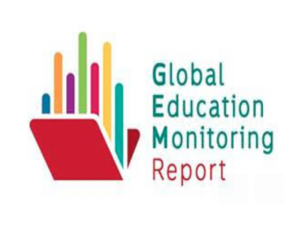Human ideas, experiences, and intentions are not objective things like molecules and atoms. Nevertheless, like their colleagues in the natural sciences, many educational researchers attempt to use objective methods that allow for control, predictability and the ability to generalize. The scientific method has long been claimed to be a value-free tool of inquiry, allowing many social scientists to create dichotomies between themselves, their methods and their research. This separation is a dangerous one, for it gives scientists a false authority of truth.
Knowledge and human interests are interwoven, as reflected in the choice of methods and the ends to which such methods are put. The idea that there is a world that can be totally analyzed, predicted, and controlled — the world of positivistic science — is frightening. Unless we reflect on the ends to be served by science, we risk that prediction and control and their associated methods might exclude other ends such as: improved understanding among people, release of human potential and formation of a sustainable relationship with our surroundings.
Many educators and researchers of education have tried to structure educational content matter and the way it is presented to students using hierarchical levels of universal goals and objectives – even environmental educators and sustainability educators tend to do this. Outside experts determine what students need in terms of knowledge, attitudes, values and skills; design a curriculum that consists of measurable/quantifiable goals and objectives; implement the program; test to what extent the goals and objectives are realized; modify the program and reinstruct the teacher. In the worst case scenario, the students, sometimes referred to nowadays as ‘clients’ or, even worse, “throughput,” become a database, the teacher an implementation instrument who is constantly held accountable using checklists, indicators and associated reporting mechanisms.
What is supposed to be a culture of learning becomes a culture of accountability… Only the researcher, who gets an article published in a peer-reviewed scientific journal, stands to benefit.
This widely used positivistic approach to education research and development often results in the ignoring of students’ ideas, experiences and mini-theories, as well as the teacher’s own classroom experiences and expertise. Teachers and students are not viewed as capable to determine the content of their own education, to set their own goals and objectives that are compatible with the community they live in and, finally, are not allowed to evaluate their own teaching and learning. Alienation between researchers and school community (but also between school managers and their own teaching staff) and disempowerment of teachers and students who have been denied a role in shaping and evaluating their own education, often is the result.
Is there a way of doing research that is less alienating and more supportive a “culture of learning”? One research approach that provides some answers has elements of Action Research and Phenomenology. The traditions of Action Research and Phenomenology use — although not exclusively — qualitative research methods such as field research, descriptive research, and ethnography in which the researcher takes the role of observer/participant and interpreter. Research here is more than a data collecting activity in that it actively seeks to understand as well as to improve the school and its community through simultaneous action and reflection with all parties involved. (See Journal of Environmental Education, “Education in Action: A Community Problem Solving Program for Schools.” Summer, 1990.)
The emphasis in research is no longer on finding causality, generating generalizable results and predicting the future with statistical accuracy. Instead the emphasis in on documenting and describing human experience and intentions, using diagnostic instruments, one’s own observations and those of teachers and students; interpreting these with all involved participants; relating the results with the foundations, goals and objectives of education (for human development); and discussing ways to adjust the curriculum and classroom practice as a result of newly obtained insights. The main objective is not to find out the kinds of changes that occur in the learner as a result of an educational endeavor, but to find out whether the design of such an endeavor, the way it was guided/facilitated and supported, and the institutional setting in which education is embedded, provided for such change in the first place!
A researcher has the moral obligation to work for and with the participants in his/her study. EE research should have a pedagogical end in the sense that the participants somehow benefit from the research. Thus, research should not just be an attempt to learn about people, but to come to know with them the reality which challenges them.
I have only scratched the surface in introducing an alternative paradigm for doing EE research. Before uncritically accepting the dominant positivistic paradigm, we have to consider alternatives. It is my belief that it is the same world of positivism that allowed for environmental deterioration at its current pace and scope in the first place!
Note: an earlier version of this post was first published when I was a student at the University of Michigan in Environmental Communicator , November/December, 1990:12) – some minor changes have been made.


